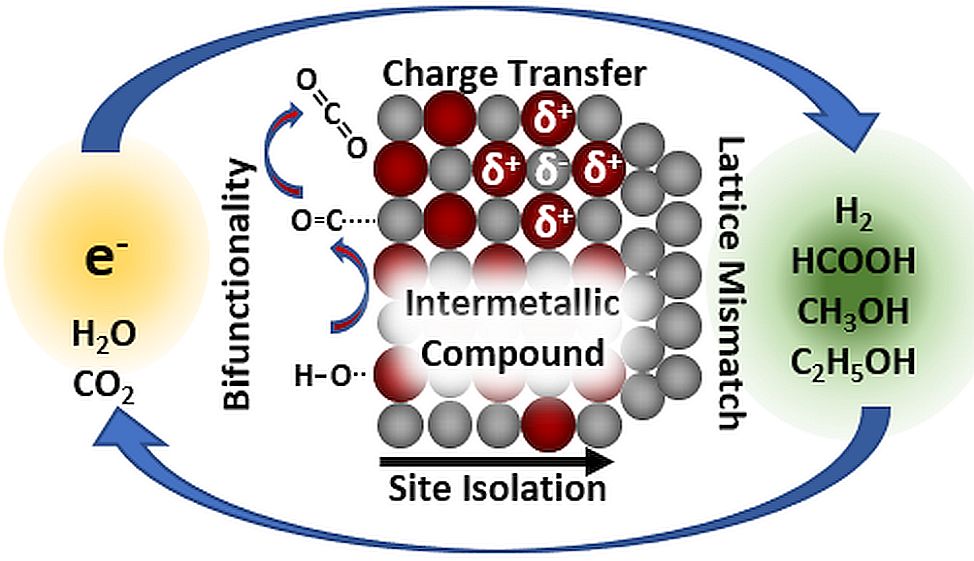Elektrochemical Energy Conversion
The turn from fossile energy carriers, as reaction to global warming and the depletion of fossile fuels, and the steadily increasing supply of renewable energy, is manifested in the "Energiewende", a political program of the german government. From a share of over 40% of the german net energy production in 2018 [1] it becomes obvious, that there is at least no technical barrier for the supply of electrical energy from renewable sources. However, due to this change in the supply chain, new issues arise: the short- and longterm storage of the electrical energy. Our workgroup is dedicating its research to these issues, by research and development of intermetallic compounds as catalyst materials for electrochemical energy conversion reactions, i.e. the direct conversion of electrical energy into chemical energy and vise versa.(Fig. 1). Examples for their application can be found in any of the reactions in scope [2].
To obtain a propper understanding, the catalytic properties of unsupported intermetallic compunds are investigated in dedicated reactions like the hydrogen evolution reaction (HER) and the electrochemical methanol oxidation reaction (MOR). By not directly jumping onto high performance catalysts, questions of the intrinsic activity, selectivity and stability are way easier to answer.
H3O+(l) + 2 e- → H2(g) +2 H2O(l) HER
CH3OH(l) + H2O(l) → 6 H+ + 6 e- + CO2(g) MOR
In the next step, selected materials will be synthesized in nanoparticulae form and optimized by means of their activity. By doing this, it needs to be ensured that selectivity and stability are not suffering in comparison to the bulk materials.
- B. Burger, Öffentliche Nettostromerzeugung in Deutschland im Jahr 2018, 2018. Link to the report of Fraunhofer ISE
- L. Rößner, M. Armbrüster, ACS Catal. 9, 2019, 2018. doi: 10.1021/acscatal.8b04566

